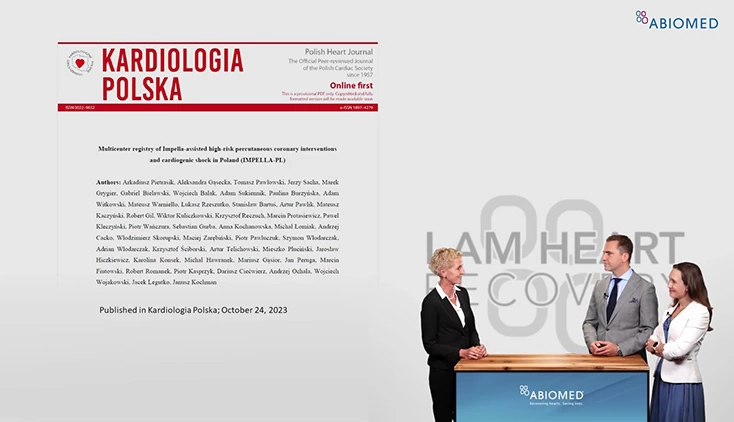Clinical Research & Data, Case Review, Access & Closure, Atherectomy, Intravascular Imaging, Shockwave, Protected PCI
RESTORE EF Case Study: Contemporary Practices for Impella®-Supported Complete Revascularization
Jason Wollmuth, MD, FACC, reviews the first case he enrolled in the RESTORE EF study, a real-world registry of patients with low EF and complex coronary disease. The case highlights best practices and contemporary techniques to improve symptoms as well as ejection fraction in these complex patients. Dr. Wollmuth is the director of complex coronary interventions at the Providence Heart Institute in Portland, OR and co-principal investigator of the RESTORE EF study.
The case is a 69-year-old patient presenting with chest/jaw pain and acute dyspnea with a history of peripheral vascular disease (PVD), hypertension, chronic obstructive pulmonary disease (COPD), and chronic kidney disease (CKD). He also had a left dominant circumflex stent placed several years prior. The heart team did not find the patient to be a good surgical candidate and the patient was referred for multivessel percutaneous coronary intervention (PCI) with hemodynamic support.
Dr. Wollmuth highlights that RESTORE EF emphasized vascular access best practices, such as a combination of fluoroscopic and ultrasound guidance to identify anatomy, look for calcification and plaque, and determine the best access point. He describes how he used fluoroscopy and ultrasound to aid in placement and positioning of the micropuncture wire. He then describes Shockwave-facilitated delivery of the sheath and the single access Impella insertion technique he has been using for several years that allows him to place the PCI sheath through the diaphragm of the Impella sheath, eliminating additional vascular access previously needed for PCI.
Dr. Wollmuth explains other elements of the procedure including a hybrid approach to the circumflex chronic total occlusion (CTO) with intravascular ultrasound (IVUS) with balloon dilatation and stenting. He describes orbital atherectomy of the left main and LAD through the diagonal branch and wiring of the branches to the bifurcation. He briefly discusses strategies for dealing with bifurcations and the Culotte and DK crush options, noting that in this case, he decided to approach the LAD diagonal branch with a DK crush before proceeding to place additional stents using a second DK crush in the left main bifurcation.
Dr. Wollmuth reviews follow-up IVUS and angiograms. He explains that image-guided PCI is not just looking at IVUS at the end of the procedure, “but really using it as a guide for vessel prep strategies, and identifying appropriate proximal and distal landing zones, and identifying vessel sizing.”
“This patient had a fairly dramatic improvement in his symptoms, Wollmuth explains. “He essentially… does not have any significant heart failure or angina despite being almost 3 years out from his initial PCI.”
Dr. Wollmuth concludes by explaining that RESTORE EF is the lead-up to the “gold standard” PROTECT IV trial, which will provide short-term data as well as long-term data out to three years and will “help us really determine the value of revascularization and the optimal approach to dealing with these surgical turndown patients.”
Sign Up for Latest Updates
NPS-3061


